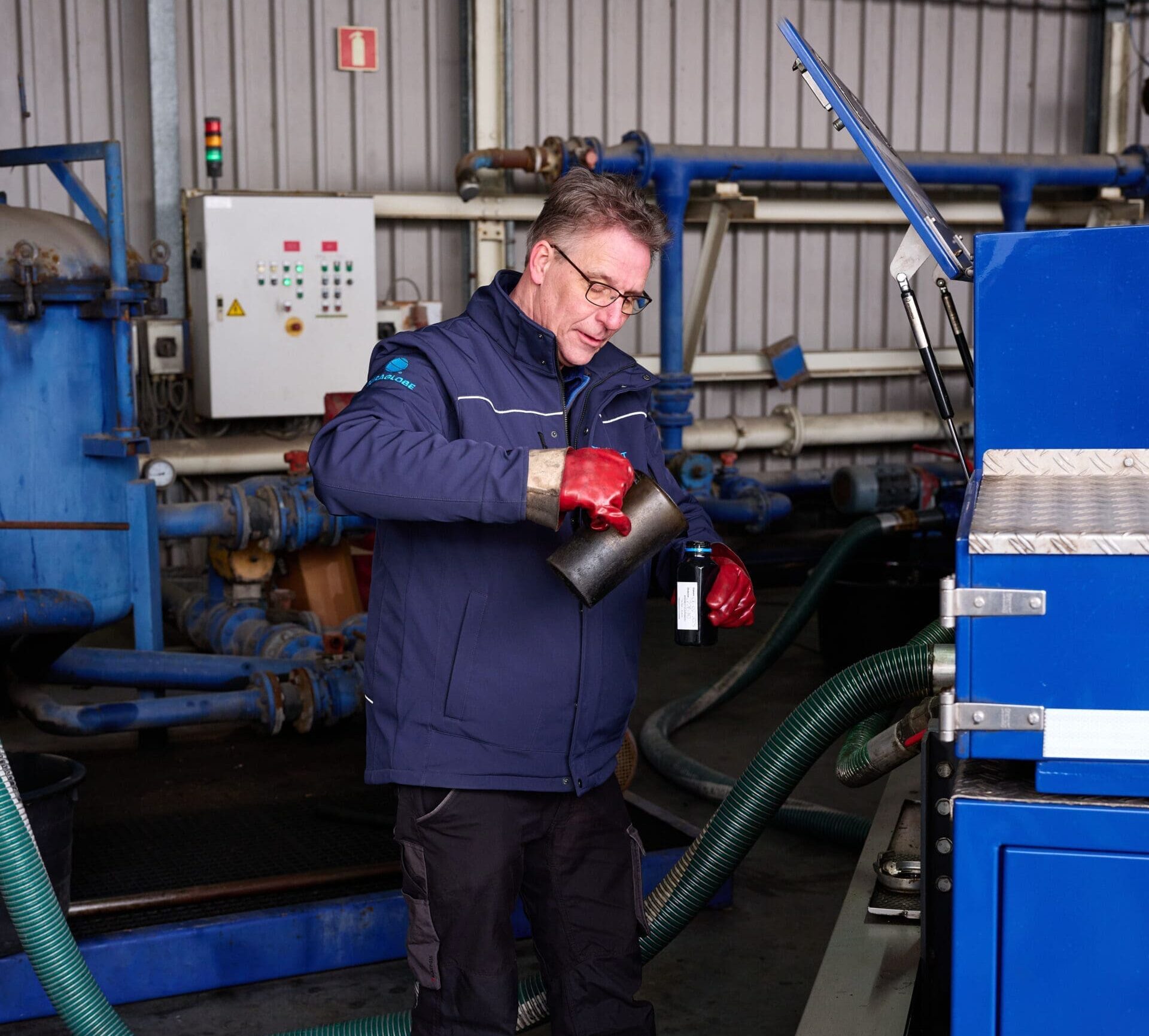
Transformer oil is indispensable in electrical installations that run continuously in a wide range of applications: from industrial production halls to distribution boxes on company premises and transformers in the heavier automotive sector. This specialized oil prevents malfunctions, overheating and electrical breakdown, and also plays a role in transformer recycling, safely dismantling old installations. But like other technical oils, transformer oil has a limited lifespan. This article explains what transformer oil is, when replacement is necessary, and how to dispose of waste oil responsibly.
What does transformer oil do?
Transformer oil - also known as insulation oil or cooling oil - is used in transformers, switchboards and other high-voltage components. It has two main functions:
- Cooling: The oil dissipates heat generated by the flow of electricity.
- Insulation: It prevents electrical breakdown between conductors.
The oil must be extremely pure and contain no moisture, acids or metal particles. Contamination or oxidation lowers the dielectric strength and increases the risk of failure and damage.
Transformer recycling starts with timely oil changes
Transformer oil ages due to heat, oxidation and contamination with water or solids. The oil then becomes darker, more viscous and less effective as an insulator. Once the quality drops below a certain level, the oil is technically finished and is an important part of the broader process of transformer recycling. It then provides insufficient protection and even poses a risk to the installation.
A timely oil analysis is essential to determine whether the oil still meets requirements. In doing so, prevent unplanned downtime, equipment damage and unsafe situations.
Arrange for proper drainage
Spent transformer oil is an oily waste product that must be disposed of safely and professionally according to legislation. Especially since the oil may be contaminated with PCBs, heavy metals or other harmful substances. Improper storage or discharge can lead to soil contamination and heavy fines.
Companies in the industrial, automotive and energy sectors are required by law to have waste oil - including transformer oil - collected by an authorized processor. This ensures safe disposal, processing and documentation according to the Activities Decree Environmental Management Act and EVOA guidelines.
Learn more about how to dispose of waste oil responsibly?
Frequently asked questions about transformer oil
What is transformer oil?
Transformer oil is a mineral or synthetic oil used as an insulating and cooling agent in transformers and other electrical installations. It provides heat dissipation and prevents electrical surges.
What is the best oil for transformers?
It depends on the type of installation and the environment. In many cases, purified mineral oil is used because of its good thermal and electrical properties. In fire-sensitive or environmentally sensitive environments, synthetic or ester-based oils are more often used.
What oil in transformer?
Transformers are usually filled with mineral oil unless specific conditions call for alternatives such as silicone oil or natural esters. The oil must meet international standards such as IEC 60296.
What kind of oil do they put in transformers?
Specially purified oil with high dielectric strength and thermal stability is used in transformers. This oil is free of PCBs, moisture and other contaminants, and should be checked periodically and replaced if necessary.
